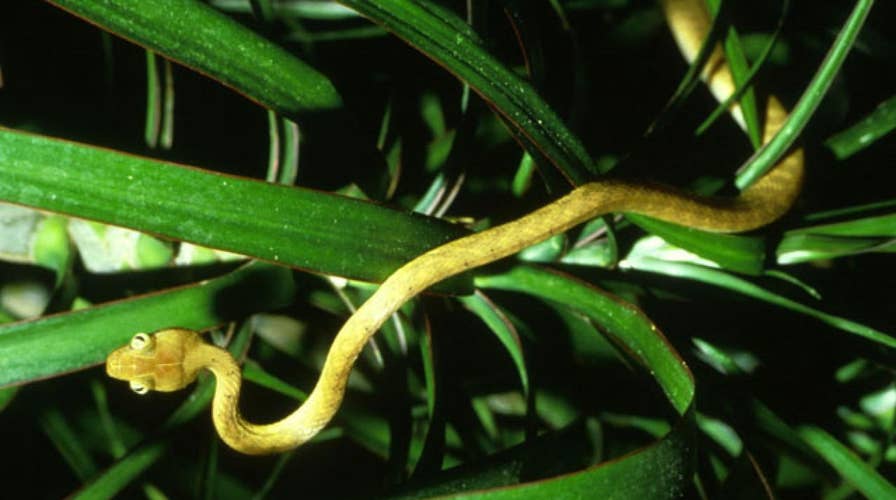A hitchhiking tree snake
The brown tree snake, an invasive species that costs Guam millions and has killed six species of bird to date has been hitchhiking on planes for decades.
They might have been made famous by Samuel L. Jackson but snakes on a plane are actually very real.
While you might not find them slithering through your Boeing 737, snakes started hitching rides on planes back in World War II.
It’s how this particular species, the brown tree snake, have become one of the most successful invasive species.
And they’re still doing it now. In fact, if they continue to go for a ride between Guam and Hawaii, experts say the same kind of “ cataclysm” could happen there and wipe out entire native bird populations there.
Their takeover began when the snake was introduced on the Pacific island of Guam during World War II.
“The snake hitchhiked on troop carriers from the Australian region and has since driven multiple native bird species into extinction, with only three species now found on the island,” said Associate Professor Bryan Fry from the University of Queensland (UQ).
A research team has been studying why the type of cat-eyed snake has been so effective at devastating native bird populations on Guam.
“The snakes’ impact was so devastating, it now ranks among the worst pests of all time,” Dr. Fry said.
The team, including UQ Ph.D. students Daniel Dashevsky and Jordan Debono as well as researchers from Florida State University, investigated the species’ toxin, which is particularly venomous to birds.
“The brown tree snake’s venom, while not dangerous to humans, is 100 times more toxic to birds than to mammals,” Dr. Fry said.
“It contains a toxin that’s made up of two smaller toxins joined together, a feature that was believed to be unique to brown tree snakes.
“Daniel and Jordan’s research has revealed that this is not the case and that any cat-eyed snakes belonging to the genus Boiga would have caused similar devastation.
“It’s just that this particular species was transported to Guam by accident.”
Cat-eyed snakes evolved in Africa and rapidly spread across the Indian subcontinent, throughout southeast Asia and Australia.
The team found the snake’s toxin type was responsible for its explosive natural spread.
“For the last 80 years or so, for the brown tree snake at least, this biological advantage has been aided by the introduction of air travel,” Dr. Fry said.
“The United States government is still flying military planes from Guam to Hawaii and the snakes continue to hitchhike.
“They’re regularly intercepted in the Hawaii airports, so if these direct flights are allowed to continue, it’s only a matter of time until they get to Hawaii and wipe out the birds like they did on Guam.
“Now we know more about the snake’s basic biology, we can help in developing a smart approach to preventing and managing this and other invasive species.”
In 2013, passengers on a Qantas flight from Cairns to Port Moresby looked out the window of their airborne aircraft and saw a 3m snake clinging to the wing.
The amethystine python scaled new heights when it hitched a ride on the Bombardier 400 aircraft.
But unlike the 2006 thriller, Snakes on a Plane, there was no danger to anyone inside the aircraft.
Expert say it is not a matter of if but when the snakes arrive on Hawaii.
Hawaii doesn’t have snakes because of laws prohibiting their entry and also because of programs on Guam and Oahu that check aircraft and ships, including cargo.
At least eight have been found on Oahu since 1981, after hitching rides to Hawaii in the wheels and undercarriages of airplanes.
This story originally appeared in news.com.au.

